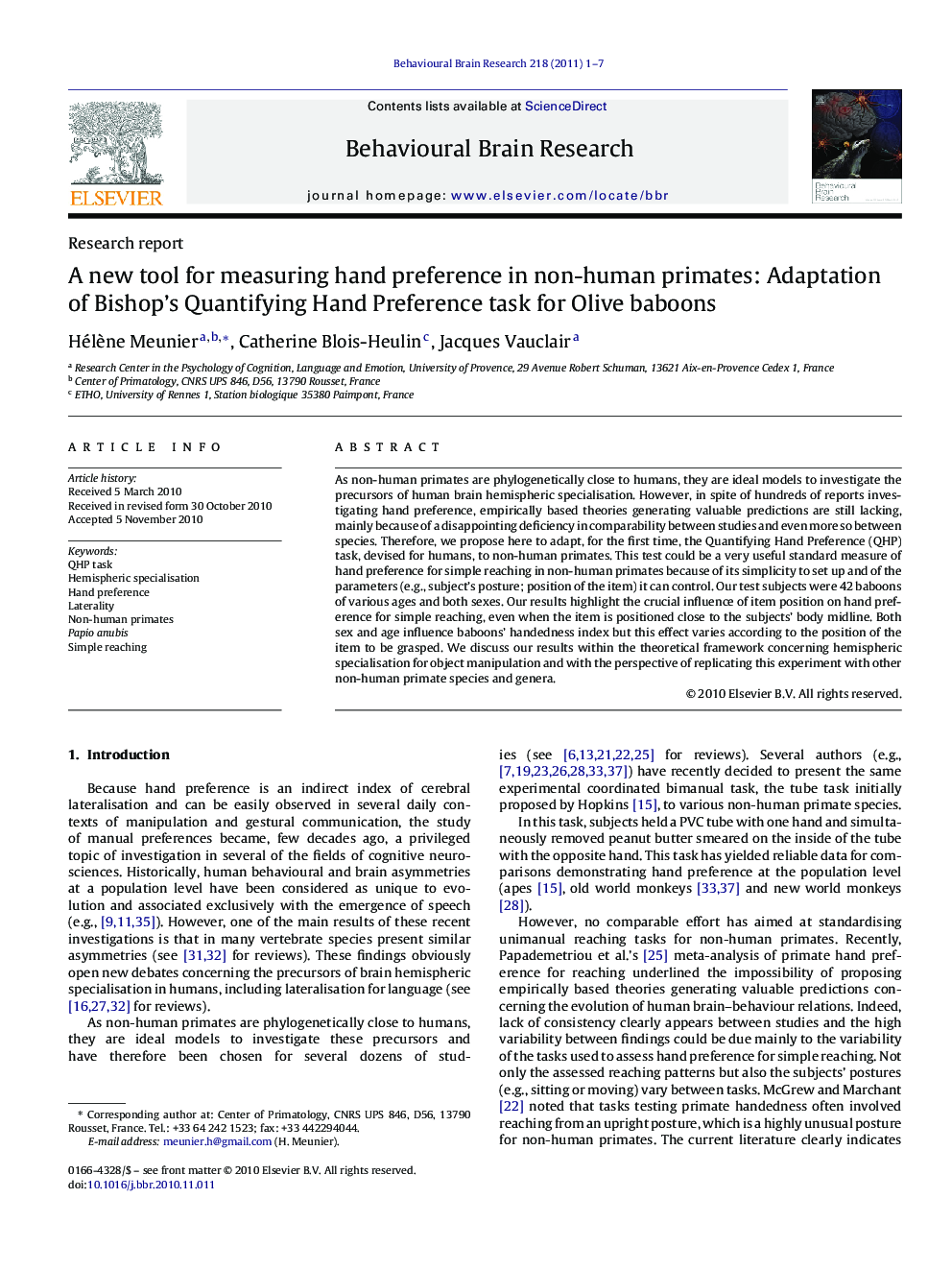| کد مقاله | کد نشریه | سال انتشار | مقاله انگلیسی | نسخه تمام متن |
|---|---|---|---|---|
| 6259877 | 1290012 | 2011 | 7 صفحه PDF | دانلود رایگان |

As non-human primates are phylogenetically close to humans, they are ideal models to investigate the precursors of human brain hemispheric specialisation. However, in spite of hundreds of reports investigating hand preference, empirically based theories generating valuable predictions are still lacking, mainly because of a disappointing deficiency in comparability between studies and even more so between species. Therefore, we propose here to adapt, for the first time, the Quantifying Hand Preference (QHP) task, devised for humans, to non-human primates. This test could be a very useful standard measure of hand preference for simple reaching in non-human primates because of its simplicity to set up and of the parameters (e.g., subject's posture; position of the item) it can control. Our test subjects were 42 baboons of various ages and both sexes. Our results highlight the crucial influence of item position on hand preference for simple reaching, even when the item is positioned close to the subjects' body midline. Both sex and age influence baboons' handedness index but this effect varies according to the position of the item to be grasped. We discuss our results within the theoretical framework concerning hemispheric specialisation for object manipulation and with the perspective of replicating this experiment with other non-human primate species and genera.
Research highlightsⶠFirst successful adaptation of the Bishop's QHP task for non-human primates. ⶠCrucial impact of methodological characteristics for studying hand preference. ⶠQHP task allows valuable comparisons between primate species, including humans. ⶠOur setup might become the standard measure of hand preference in non-human primates.
Journal: Behavioural Brain Research - Volume 218, Issue 1, 17 March 2011, Pages 1-7